Podcast: Play in new window | Download
Subscribe: Apple Podcasts | RSS
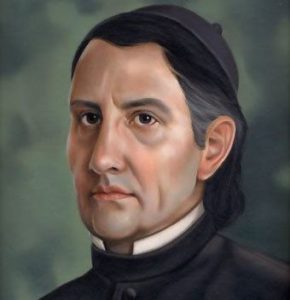 On December 12, 1794 in what is now the Basilica of the Virgin of Guadalupe in Mexico City a 29-year-old priest from the frontier territories of New Spain gave a sermon before many dignitaries. The man’s name was Fray José Servando Teresa de Mier Noriega y Guerra and he hailed from an old Spanish family of the province of Nuevo León. The sermon was part of the celebrations to honor the 263rd anniversary of the apparition of the Virgin of Guadalupe on that very spot, Tepeyac Hill, to the Indian Juan Diego, now a saint in the Catholic Church. Among the attendees at the commemorative mass were the clerical, social and governmental elite of New Spain, including the Archbishop of Mexico City, Manuel Omaña y Sotomayor and the Viceroy himself, the First Marquess of Branciforte, His Excellency Miguel de la Grúa Talamanca y Branciforte. In his sermon, Father Servando alleged that the Virgin of Guadalupe story was not what the church had been promoting it to be. First of all, it didn’t happen in 1531 as was commonly thought. The young priest did his research and could find no evidence existing before the year 1750 concerning the story of the apparition of the Virgin Mary nor any mention of the cloak on which the Virgin’s image appeared. The whole thing had been created only 44 years before, not 263 years before, he claimed. Father Servando also proposed a theory that Juan Diego’s painted cloak originally belonged to the Apostle Saint Thomas who visited ancient Mexico and was mistaken for a god and called Quetzalcoatl by the natives at the time. The Virgin on the cloak was later worshipped as Tonantzin, the sacred mother goddess of the Aztecs. Despite the fact that many fellow priests promised to come to his defense in case of trouble, Father Servando was all alone at the hands of angry elites at the end of his sermon. He had challenged the very foundations of the Church in the New World and questioned a key element of Mexican identity. There was a price to pay for that. He was exiled to Spain and jailed, and later escaped, the first of seven times the young priest would either escape from prison or break free from custody. So, who was José Servando Teresa de Mier?
On December 12, 1794 in what is now the Basilica of the Virgin of Guadalupe in Mexico City a 29-year-old priest from the frontier territories of New Spain gave a sermon before many dignitaries. The man’s name was Fray José Servando Teresa de Mier Noriega y Guerra and he hailed from an old Spanish family of the province of Nuevo León. The sermon was part of the celebrations to honor the 263rd anniversary of the apparition of the Virgin of Guadalupe on that very spot, Tepeyac Hill, to the Indian Juan Diego, now a saint in the Catholic Church. Among the attendees at the commemorative mass were the clerical, social and governmental elite of New Spain, including the Archbishop of Mexico City, Manuel Omaña y Sotomayor and the Viceroy himself, the First Marquess of Branciforte, His Excellency Miguel de la Grúa Talamanca y Branciforte. In his sermon, Father Servando alleged that the Virgin of Guadalupe story was not what the church had been promoting it to be. First of all, it didn’t happen in 1531 as was commonly thought. The young priest did his research and could find no evidence existing before the year 1750 concerning the story of the apparition of the Virgin Mary nor any mention of the cloak on which the Virgin’s image appeared. The whole thing had been created only 44 years before, not 263 years before, he claimed. Father Servando also proposed a theory that Juan Diego’s painted cloak originally belonged to the Apostle Saint Thomas who visited ancient Mexico and was mistaken for a god and called Quetzalcoatl by the natives at the time. The Virgin on the cloak was later worshipped as Tonantzin, the sacred mother goddess of the Aztecs. Despite the fact that many fellow priests promised to come to his defense in case of trouble, Father Servando was all alone at the hands of angry elites at the end of his sermon. He had challenged the very foundations of the Church in the New World and questioned a key element of Mexican identity. There was a price to pay for that. He was exiled to Spain and jailed, and later escaped, the first of seven times the young priest would either escape from prison or break free from custody. So, who was José Servando Teresa de Mier?
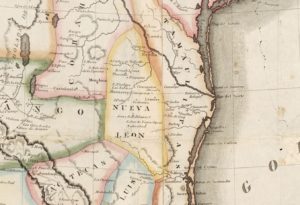 The future rebel priest was born on October 18, 1765 in the city of Monterrey, in what was then a part of New Spain called the Kingdom of New León which later became the Mexican state of Nuevo León. He hailed from a semi-aristocratic background tracing his lineage to the first settlers of the northern fringes of the Spanish Empire who came to the area in the 1590s. Further back in time, Servando descended from the dukes of Granada. His independent spirit definitely had its roots in his quasi-elite frontier upbringing. The Kingdom of New León, like other provinces on the edges of New Spain, enjoyed relative autonomy from a meddling central government in Mexico City. Spanish landowners and owners of lucrative mines in the province amassed gigantic fortunes and did as they pleased with very little colonial government oversight. For a few hundred years an interesting society developed in this area. Unlike other parts of what would later become Mexico, this region was devoid of the concept of mestisaje, the blend of native and Spanish culture – and genetics – through intermarriage. The native-born Spanish, or criollos, of Nuevo León did not mix with the indigenous population of the area collectively known as Chichimeca. The area’s indigenous had no interest in integrating into mainstream colonial society and lived a marauding nomadic existence on the margins. The reineros, as the Spanish inhabitants of Nuevo León called themselves, didn’t want to include the Indians and saw the Chichimeca as a nuisance. For more information about this Native American group, please see Mexico Unexplained episode number 142: https://mexicounexplained.com//chichimeca-warriors-of-the-north/ At the age of 16 Servando left the frontier and entered the Dominican Order in Mexico City, studying at the Colegio de Porta Coeli. He became a priest and then received his doctorate at the age of 27 in the year 1792. By then Father Servando was already known as a passionate orator and hundreds attended his sermons.
The future rebel priest was born on October 18, 1765 in the city of Monterrey, in what was then a part of New Spain called the Kingdom of New León which later became the Mexican state of Nuevo León. He hailed from a semi-aristocratic background tracing his lineage to the first settlers of the northern fringes of the Spanish Empire who came to the area in the 1590s. Further back in time, Servando descended from the dukes of Granada. His independent spirit definitely had its roots in his quasi-elite frontier upbringing. The Kingdom of New León, like other provinces on the edges of New Spain, enjoyed relative autonomy from a meddling central government in Mexico City. Spanish landowners and owners of lucrative mines in the province amassed gigantic fortunes and did as they pleased with very little colonial government oversight. For a few hundred years an interesting society developed in this area. Unlike other parts of what would later become Mexico, this region was devoid of the concept of mestisaje, the blend of native and Spanish culture – and genetics – through intermarriage. The native-born Spanish, or criollos, of Nuevo León did not mix with the indigenous population of the area collectively known as Chichimeca. The area’s indigenous had no interest in integrating into mainstream colonial society and lived a marauding nomadic existence on the margins. The reineros, as the Spanish inhabitants of Nuevo León called themselves, didn’t want to include the Indians and saw the Chichimeca as a nuisance. For more information about this Native American group, please see Mexico Unexplained episode number 142: https://mexicounexplained.com//chichimeca-warriors-of-the-north/ At the age of 16 Servando left the frontier and entered the Dominican Order in Mexico City, studying at the Colegio de Porta Coeli. He became a priest and then received his doctorate at the age of 27 in the year 1792. By then Father Servando was already known as a passionate orator and hundreds attended his sermons.
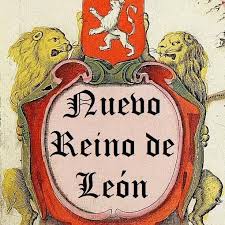 After his somewhat blasphemous oration at the celebration of the Virgin of Guadalupe on Tepeyac Hill in 1794, the Church expelled Father Servando from Mexico and stripped him of his doctorate degree. They also prohibited him from teaching, hearing confession or making sermons. He was exiled to a sort of house arrest in northern Spain at the convent of Las Caldas del Besaya. In 1796 the Council of the Indies heard his case, and on his way back to the convent Servando took a wrong road and was arrested again. Because the royal authorities thought he was trying to escape, they confined him to a Franciscan monastery in the city of Burgos. As the Council was slow to decide his fate, the young priest decided to escape and fled across the border to France, taking refuge first in the city of Bayonne and eventually ending up in Paris. In the French capital Servando met up with José Serea, a South-American-born Spanish count from Quito who had made a fortune in Cuban sugar plantations. The wealthy count served as a patron of sorts, and helped Servando open a Spanish language academy in Paris. In Paris he met and mingled with other Latin American exiles, including the former teacher of the future Great Liberator of South America, Simón Bolívar. By 1802 Servando left Paris and went to Rome where he settled into a life of a secular priest outside of the Dominican Order. His life was pretty uncomplicated until he decided to return to Spain.
After his somewhat blasphemous oration at the celebration of the Virgin of Guadalupe on Tepeyac Hill in 1794, the Church expelled Father Servando from Mexico and stripped him of his doctorate degree. They also prohibited him from teaching, hearing confession or making sermons. He was exiled to a sort of house arrest in northern Spain at the convent of Las Caldas del Besaya. In 1796 the Council of the Indies heard his case, and on his way back to the convent Servando took a wrong road and was arrested again. Because the royal authorities thought he was trying to escape, they confined him to a Franciscan monastery in the city of Burgos. As the Council was slow to decide his fate, the young priest decided to escape and fled across the border to France, taking refuge first in the city of Bayonne and eventually ending up in Paris. In the French capital Servando met up with José Serea, a South-American-born Spanish count from Quito who had made a fortune in Cuban sugar plantations. The wealthy count served as a patron of sorts, and helped Servando open a Spanish language academy in Paris. In Paris he met and mingled with other Latin American exiles, including the former teacher of the future Great Liberator of South America, Simón Bolívar. By 1802 Servando left Paris and went to Rome where he settled into a life of a secular priest outside of the Dominican Order. His life was pretty uncomplicated until he decided to return to Spain.
In Madrid Father Servando was arrested again, but not for fleeing the country some 7 years before. He was apprehended for sedition because he had written a play advocating for Mexican independence. The royal authorities jailed him in Seville. In less than two years he escaped but was caught again and sent back to the same prison. While there he befriended a group of jailed rabbis and converted two of them to Catholicism. When word of this conversion reached the Vatican, the pope demanded Father Servando’s release and he then became a domestic prelate, or an honorary priest serving in the papal household. The Mexican-born priest loved Rome and enjoyed life in the pope’s palace, but when war broke out between France and Spain, Servando asked the Holy Father permission to leave the papal palace so he could become a military chaplain with the Volunteers of Valencia. The pope granted his request and the young priest found himself in the middle of many battles pitting the forces of Spain against those of Napoleon. At the French town of Belchite, the French captured Servando and imprisoned him, but the cleric did what he did best and escaped. He then secured a recommendation from famous Spanish military commander, General Joaquín Blake y Joyes, who helped secure him an annual pension of 3,000 pesos for his wartime valor.
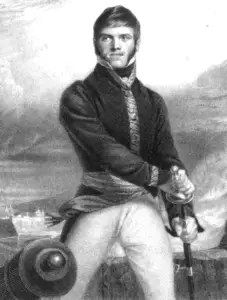 With an income secure, Father Servando then left Spain and moved to London. In London, much like in Paris, the young Mexican became friends with political exiles from all over the Spanish possessions in the Americas. He teamed up with a fellow Mexican named José María Blanco and founded a newspaper dedicated to Latin American independence movements called El español. The publication generated awareness and helped raise funds dedicated to Spanish-American liberation. While working on the newspaper Servando met a Spanish colonel from Navarre, Francisco Javier Mina, who was sympathetic to the Mexican Independence movement. With financing provided by wealthy English aristocrats, Servando and Mina headed an expedition to go to New Spain to fight for its independence. With a handful of others in May of 1816, the two made it to Baltimore, Maryland in the United States. There they met up with three other Latin American revolutionaries who had raised money from wealthy Baltimore merchants. The group spent four months in the US gathering together more men, supplies and public support. In September of 1816 the group took two ships to Mexico making one stop in Haiti. By late 1816 they arrived on Mexican shores. The insurgent group built a fort and planned to rendezvous with the Mexican rebel forces commanded by Guadalupe Victoria. The expedition ended in disaster. Spanish royalist forces captured the fort and Father Servando was taken prisoner. He was sent to the Fortress of San Carlos de Perote in Veracruz and was kept in the former dungeons of the Holy Inquisition. Three years later, in 1820, Spanish authorities transferred the priest to a prison in Havana where he soon escaped. This was the sixth time Servando did this.
With an income secure, Father Servando then left Spain and moved to London. In London, much like in Paris, the young Mexican became friends with political exiles from all over the Spanish possessions in the Americas. He teamed up with a fellow Mexican named José María Blanco and founded a newspaper dedicated to Latin American independence movements called El español. The publication generated awareness and helped raise funds dedicated to Spanish-American liberation. While working on the newspaper Servando met a Spanish colonel from Navarre, Francisco Javier Mina, who was sympathetic to the Mexican Independence movement. With financing provided by wealthy English aristocrats, Servando and Mina headed an expedition to go to New Spain to fight for its independence. With a handful of others in May of 1816, the two made it to Baltimore, Maryland in the United States. There they met up with three other Latin American revolutionaries who had raised money from wealthy Baltimore merchants. The group spent four months in the US gathering together more men, supplies and public support. In September of 1816 the group took two ships to Mexico making one stop in Haiti. By late 1816 they arrived on Mexican shores. The insurgent group built a fort and planned to rendezvous with the Mexican rebel forces commanded by Guadalupe Victoria. The expedition ended in disaster. Spanish royalist forces captured the fort and Father Servando was taken prisoner. He was sent to the Fortress of San Carlos de Perote in Veracruz and was kept in the former dungeons of the Holy Inquisition. Three years later, in 1820, Spanish authorities transferred the priest to a prison in Havana where he soon escaped. This was the sixth time Servando did this.
In 1821 Father Servando found himself in Philadelphia and ended up living in the house of Manuel Torres, one of the Latin American revolutionaries he had initially met in Baltimore during his first trip to the United states 5 years earlier. Torres was born in the Spanish Viceroyalty of New Granada in South America which would later be divided into the modern nations of Venezuela, Colombia, Ecuador and Panama. He was acting as a representative for the new nation of New Granada in the US. The Mexican priest spent most of his time in Torres’ home writing and trying to gather together American support for the Mexican independence movement. A year after his arrival, history called the father away again.
In February of 1822, Servando returned to Mexico and landed in Veracruz. Although Spain formally granted Mexico its independence in September of the previous year the Spanish royalists still occupied San Juan de Ulúa a massive complex of fortresses on an island overlooking the port of Veracruz. When Servando landed in Veracruz he was captured by the royalists and sent to the prison at San Juan de Ulúa. He did not escape this time, rather, the First Mexican Constituent Congress secured his release. Now free on the territory of an independent Mexico, the Congress made him a representative from the new state of Nuevo León. In its early days as an independent country Mexico struggled with what form of government it would adopt. It eventually settled on a home-grown monarchy called the First Mexican Empire headed by a former Mexican military commander, Agustín de Iturbide. In Congress Servando spoke out against the Empire and for his impassioned speeches he was arrested again and imprisoned at the Monastery of Santo Domingo. On New Year’s Day of 1823, he escaped again. This was his seventh and last time.
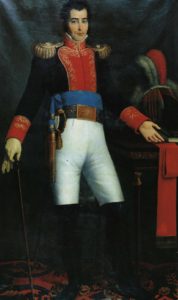 By May of 1823 the Mexican Empire ended and Emperor Agustín de Iturbide was forced to flee the country. Father Servando was again called to public service. He became part of the Second Mexican Constituent Congress and argued for a centralized republic with a constitution similar to that of the United States. He was one of the signers of the original Mexican constitution which went into effect in 1824. Much like the pope had done some two decades before, the first president of Mexico, Guadalupe Victoria, invited Servando to live in his palace. The aging priest took him up on his offer but would not live to see the first president leave office. Father Servando died at the age of 62 on December 3, 1827 and was honorably interred in the church of Santo Domingo in Mexico City.
By May of 1823 the Mexican Empire ended and Emperor Agustín de Iturbide was forced to flee the country. Father Servando was again called to public service. He became part of the Second Mexican Constituent Congress and argued for a centralized republic with a constitution similar to that of the United States. He was one of the signers of the original Mexican constitution which went into effect in 1824. Much like the pope had done some two decades before, the first president of Mexico, Guadalupe Victoria, invited Servando to live in his palace. The aging priest took him up on his offer but would not live to see the first president leave office. Father Servando died at the age of 62 on December 3, 1827 and was honorably interred in the church of Santo Domingo in Mexico City.
His life has a curious footnote. His body was exhumed along with 12 others in 1861. All bodies were mummified. The bodies were put on display in an exhibition and were labeled as victims of the Inquisition. An Italian curiosity peddler bought the mummies and brought them back to Europe, where they eventually ended up in a museum in Belgium. The museum closed after a few short years. By the end of the 19th Century no one knew what became of the remains of Father Servando. In death, to this day, the rebel Mexican priest still manages to be elusive.
REFERENCES
Servando Teresa de Mier, José. The Memoirs of Fray Servando Teresa de Mier. Oxford, UK: Oxford University Press, 1998.
